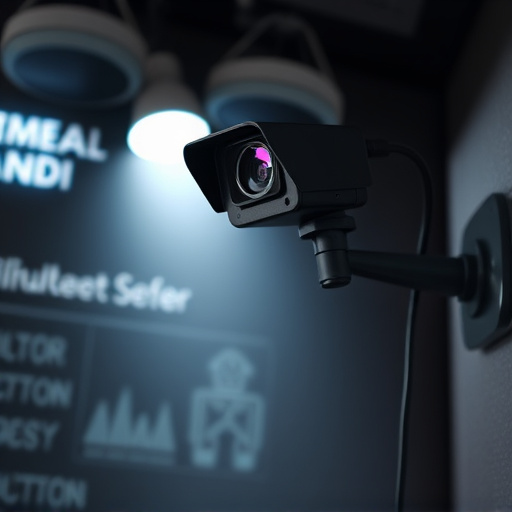Spy cameras and microphones have evolved dramatically, becoming increasingly advanced and undetectable, disguised as everyday items like smoke detectors or power outlets. They offer high-resolution video, night vision, motion activation, and advanced noise cancellation for clear audio. This technology empowers surveillance in various sectors but raises critical privacy concerns, prompting discussions on ethical implications and regulatory frameworks. Modern spy cameras provide exceptional clarity and precise sound localization, enhancing security while presenting challenges balancing public safety and individual freedoms in the digital age.
“In an era where technology advances at a rapid pace, surveillance audio has become an increasingly prevalent aspect of our lives. This article explores the multifaceted world of spy cameras and microphones—their capabilities, hidden installations, legal implications, and ethical debates. We delve into the rise of advanced audio technology, its potential risks and benefits, and its profound impact on society and security. Understanding these elements is crucial to navigating the complex landscape of surveillance in the digital age.”
Understanding Spy Cameras and Microphones: Unveiling Their Capabilities
Spy cameras and microphones have evolved significantly, becoming increasingly sophisticated and undetectable. These hidden devices are designed to capture footage and audio discreetly, often with features like motion activation, night vision, and high-resolution video. Modern spy cameras can be disguised as everyday objects like smoke detectors, power outlets, or even decorative items, making them hard to spot.
Microphones embedded in these devices are capable of picking up conversations from considerable distances, with advanced noise cancellation technology ensuring clear audio quality. They can record both visual and auditory information, providing a comprehensive surveillance solution. This blend of technology allows for detailed monitoring, making spy cameras and microphones valuable tools for security purposes, as well as in investigative journalism and private detective work.
The Rise of Hidden Surveillance: Where Are They Installed?
In recent years, the proliferation of advanced technology has led to a subtle yet significant shift in surveillance methods, marking the rise of hidden surveillance systems. These innovative devices, often disguised as everyday objects, include spy cameras and microphones designed to operate discreetly, capturing visual and auditory data without attracting attention. From unassuming wall-mounted decorations to seemingly innocuous electronic gadgets, these hidden surveillance tools are being strategically installed in various settings.
Public spaces, offices, homes, and even vehicles have become potential locations for such covert monitoring. Spy cameras, often disguised as regular light bulbs or smoke detectors, can capture high-resolution footage while microphones, disguised as common household items, record conversations with remarkable clarity. This evolving landscape of hidden surveillance raises important privacy concerns, necessitating a thoughtful discussion on the ethical boundaries and regulatory frameworks surrounding this increasingly accessible technology.
Legal Aspects and Ethical Concerns: Protecting Privacy in the Age of Audio Surveillance
In the age of advanced technology, surveillance audio through spy cameras and microphones has become increasingly prevalent. While these devices offer enhanced security and peace of mind for some, they also raise significant legal and ethical concerns regarding privacy. The use of hidden cameras and recording devices can infringe upon individuals’ right to privacy, leading to a delicate balance between public safety and personal freedom.
Legal frameworks vary across jurisdictions, but many countries have strict regulations in place to protect citizens from unwarranted surveillance. Unauthorized placement of spy cameras or microphones in private spaces is often considered a breach of privacy laws. Ethical considerations further complicate the issue, as the use of such devices can lead to mistrust, invade personal space, and even encourage a culture of secrecy. As technology continues to advance, society must engage in ongoing discussions to ensure that surveillance practices remain accountable, transparent, and respectful of individual rights.
Advanced Technology: Enhancing Audio Quality and Detection Methods
Advanced technology has played a pivotal role in enhancing the capabilities of surveillance audio systems, particularly with spy cameras and microphones. Modern spy cameras now boast remarkable resolution, capturing crystal-clear images even in low-light conditions. Similarly, microphone technology has evolved significantly, allowing for more accurate and sensitive audio detection. These advancements enable clearer identification of sounds, voices, and even subtle noises, enhancing the overall effectiveness of surveillance operations.
The integration of high-tech microphones, such as directional and array microphones, ensures precise sound localization. This precision helps in zeroing in on specific sources of noise or conversation, providing invaluable intelligence. Additionally, digital signal processing techniques further refine audio quality, minimizing background noise and interference, making it easier to capture and analyze speech from a distance.
Potential Risks and Benefits: Impact on Society and Security
Surveillance audio equipment, including spy cameras and microphones, presents a double-edged sword in modern society. While they offer unprecedented opportunities for enhancing security and public safety, there are also significant risks to privacy and civil liberties. The mere presence of these devices can foster a sense of constant surveillance, chilling free speech and creative expression. People may become cautious about their actions and conversations, leading to self-censorship and a potential impact on open, democratic discourse.
On the other hand, surveillance technology plays a crucial role in maintaining public order, preventing crimes, and aiding in investigations. It can be a vital tool for law enforcement agencies to protect citizens from threats, such as terrorism and organized crime. With proper regulations and oversight, these technologies can improve overall security without unduly infringing on individual privacy rights. Balancing the benefits of enhanced security with the potential risks to personal freedoms is an ongoing challenge in the digital age.
